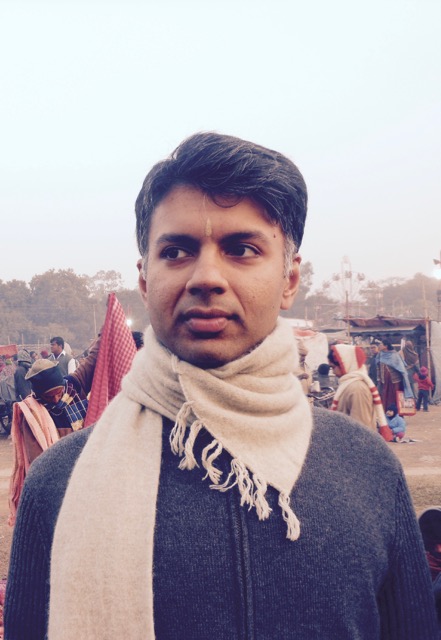 Marcelo Hernandez Castillo was born in Zacatecas, Mexico, and crossed the border through Tijuana at the age of five with his family. He is a Canto Mundo fellow and the first undocumented student to graduate from the University of Michigan’s MFA program. He teaches summers as the resident artist at the Atlantic Center for the Arts in Florida and at Sacramento State University. He was a finalist for the New England Review Emerging Writer Award, and his manuscript was a finalist for the Alice James Book Prize and the National Poetry Series. His work has been adapted into opera through collaboration with the composer Reinaldo Moya. His poems and essays can be found in Indiana Review, New England Review, The Paris American, Gulf Coast and Southern Humanities Review, among others. He helped initiate the Undocupoets campaign which successfully eliminated citizenship requirements from all major first poetry book prizes in the country.
Marcelo Hernandez Castillo was born in Zacatecas, Mexico, and crossed the border through Tijuana at the age of five with his family. He is a Canto Mundo fellow and the first undocumented student to graduate from the University of Michigan’s MFA program. He teaches summers as the resident artist at the Atlantic Center for the Arts in Florida and at Sacramento State University. He was a finalist for the New England Review Emerging Writer Award, and his manuscript was a finalist for the Alice James Book Prize and the National Poetry Series. His work has been adapted into opera through collaboration with the composer Reinaldo Moya. His poems and essays can be found in Indiana Review, New England Review, The Paris American, Gulf Coast and Southern Humanities Review, among others. He helped initiate the Undocupoets campaign which successfully eliminated citizenship requirements from all major first poetry book prizes in the country.
His poems, "La Virgin" and "Orgin of Prayer," appeared in Issue Sixty-Two of The Collagist.
Here, he speaks with Interview T.m. Lawson about the poetical influence of Larry Levis, styling decisions within verse, and the path to creation.
You once said in an interview (with PBS) that you pursued writing as a way to offset suspicions on your background as an immigrant and, “[b]y way of fear, along came poetry.” I thought this was insightful; powerful poetry comes from powerful emotions that spark it. You start your poem, “Origin of Prayer”, starts off with this emotion: “In all its simplicity to pray / is to stare at something other than yourself for once.” It is dedicated to/styled after Larry Levis (who is a personal influence of mine as well!) Which work of his inspired this poem? What is your process when ‘transmigrating’ the soul of another poet’s poetry into your own writing?
First of all, thank you for these questions and thank you for your time. I absolutely love The Collagist. It was one of the first journals that I published me in which I thought “I can actually do this.” I feel like it’s been such a long time since I wrote these poems that it’s a joy to revisit them. I’ve changed them so much that I can hardly tell where one ends and another begins.
I guess I couldn’t pinpoint exactly one poem of Levis that this was after but rather it was in the spirit of Levis’ work at large. He has these amazing and grandiose openings that assume complete authority, complete freedom to begin with something large and work its way into something small. He often opened his poems with these huge announcements that I was told needed to be earned—broad statements that couldn’t just be given away like candy, you had to work for them. From his early work, one of his poems opened with “The men who killed poetry / Hated silence…Now they have plenty.” Or, “The last thing my father did for me / Was map a way: he died, & so / Made death possible.” Like, how does he do that? And from one of my favorite poems of his, “The brow of a horse in that moment when / the horse is drinking water so deeply from a trough / it seems to inhale the water, is holy.” I think I am less of a poet every time I read Levis. I have family who’ve lived in Selma CA, his hometown, since the early 70’s. I visit Selma about once a year and every time I’m there I try to look for what he saw in those endless rows of grape vines. And then, I remember probably one of his best openings, “I’m going to put Johnny Dominguez right here / In front of you on this page so that / You won’t mistake him for something else, / An idea, for example, of how oppressed / He was rising with is pan of Thompson Seedless / Grapes from a row of vines…” I’m dumbstruck. If there was something to bow to I would bow in the middle of the hot Selma Sun.
“La Virgen” is captivating, claustrophobic, and creepy. One thing I admired in the poem was the image of the Virgin Mary as a horrific figure straight out of The Ring, but the pious intensity remains true at the end despite some disturbing vibes. It is a delicate balancing act that you do, and do very well. This is a very specific question, but something that stuck with me; why capitalize the word ‘but’ in second to last stanza in “La Virgen”? Every other word, save for the pronoun “I”, is lowercased; is this a way of separating a major shift? I’m always interested in authorial intent for these little mysteries that present themselves in poems.
I wish I had something interesting to say to this and I really appreciate the careful reading you’ve taken to it. I like that actually—a shift. There was a time when I was confused by punctuation or rather than confused, I was obstructed by it. I had a few unpunctuated poems and part of that process also meant leaving everything lowercase. I should have left even the “I” lowercase but I felt that was almost irreverence to Lucille Clifton’s use of the lowercase “i.” If I did it, I felt like it would come off as a cheap cop out. I liked how everything just stood there on the page, independent of itself. I guess it gave each line a greater autonomy than I could manage at the time. Unfortunately, I wasn’t so good at it as I first thought. I just couldn’t maintain it. There were places I absolutely needed punctuation. So, that strategy fell flat. I mean, it’s trial and error right?
So, I guess to answer your question, that capital “B” was a typo. Like I said, I wish I had something better to say but sometimes it’s less glamorous than that. I love that you allude to The Ring. La Virgen de Guadalupe has always been an idea that evaded me. I didn’t grow up catholic but I always felt like she transcended religion and embodied more of a culture iconography. I left the protestant church because I was disillusioned by conservative ideologies that were narrow minded and even at times hateful. I spent a lot of time thinking about the allure that La Virgen had on me. A few years ago I went to Mexico City to see the original painting and climb the hill of Tepeyac where she first appeared to Juan Diego. Do you know what they do with all of the flowers that are brought to La Virgen at her altar? A convent crushes them and infuses their perfumes into special rosaries. Isn’t that beautiful?
Religion seems to be a running theme in both these poems, yet it does not always have a positive spin. For instance, “Origin of Prayer” features a line that starts with a saint “syphilitic with vision”, which immediately brings to mind the various infamous Catholic church scandals and it is followed up by a later more reflective line: “Perhaps God too had to look away from Himself”. This brings to mind the current state of participation in religion and its decline of prestige. It strikes me as at once critical but also as a loving homage to the history of the church and what it (can) inspires. Does this theme and perspective repeat for you?
It’s funny that you point to that line because now that I’m on the the theme of Levis, I actually think that line came from Levis. Something about “syphilitic with vision.” I think it comes from his poem “Linnets,” which is one of my favorites. I might have jumped the gun with my last response but I really did become disillusioned with religion. I couldn’t get over the hypocrisy. And yet, I still pray, if ever briefly. I still write about God because it’s such a great invention, or idea, isn’t it? Not to say that God doesn’t exist, but that our image of him/her/them continually changes.
What are you currently reading?
Right now I’m reading a lot of prose. I’m reading Jesmyn Ward’s Men We Reaped, and I’m trying to get through Cynthia Ozick’s Quarrel and Quandary, though I find it highly problematic. I just finished The Empathy Exams by Leslie Jamison and, coincidentally, I’m reading a theological text titled Defense of the Faith and the Saints, by some guy named B.H. Roberts. I’ve never read Virginia Woolf so I’m getting through To the Lighthouse. There isn’t much in terms of poetry but I did just start reading Jennifer S. Cheng’s book House A out from Omnidawn. I promised myself that I would read more. Last year was probably the single most difficult year of my life for reasons I won’t go into here but I finally feel like I’m getting back into a rhythm.
What are you writing or working on?
Right now I’m working on a book of hybrid essays / memoir (thus all the prose I’ve been reading). I want to investigate the mechanisms behind the immigration apparatus and the effects that the immigration system has on families. Both of my parents have been held in immigration detention centers and I want to elucidate the impact of incarceration.
I want to investigate the ideas of separation, Latino Masculinity, exile, deportation, immigrant experience, death, and sexuality. I envision this as a collection of interconnected essays, perhaps even lyrical in some aspects. It’s still in the early stages but I hope to get some momentum going this semester with a light teaching load.
I haven’t been writing much, or actually any, poetry lately. I feel like I can’t move on until my book of poems is out in the world. I feel like the more I tamper with it, the more manipulative the meanings become. I don’t want to write toward something but rather, I want to be lead by something.
I want to stretch these poems to their breaking point. Sometimes I think I do more harm than good by continually revising. Sometimes I think that previous versions were far better off without my tampering. I’m at the point where I’ll either work on these poems further for a few more years or throw them away and start over again.
I’m also going to begin a translation collaboration with another poet. We’re translating a 600 page book of poems written by a young experimental Latin American poet named Yaxkin Melchy. I’ve published a few of his translations on my own but it’s going to be great to see what we can translate together.
After a completely hellish year, I just want to create something again. I don’t think that’s too much to ask.









